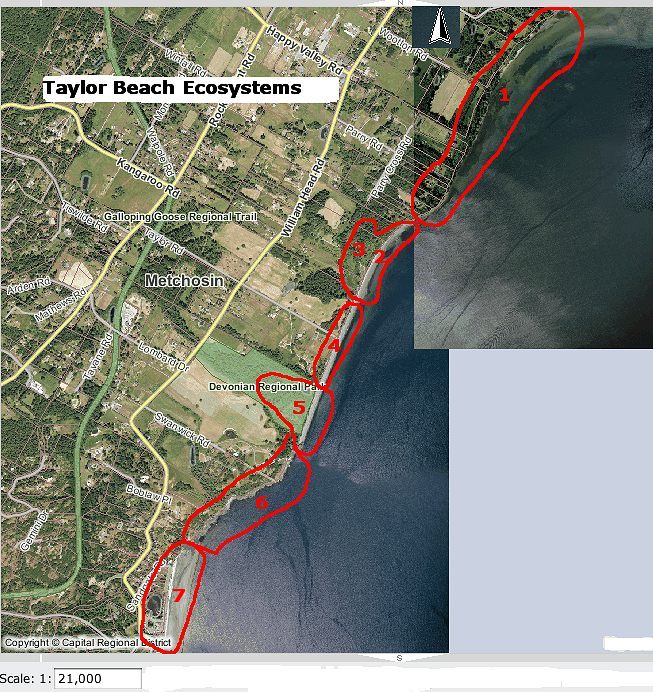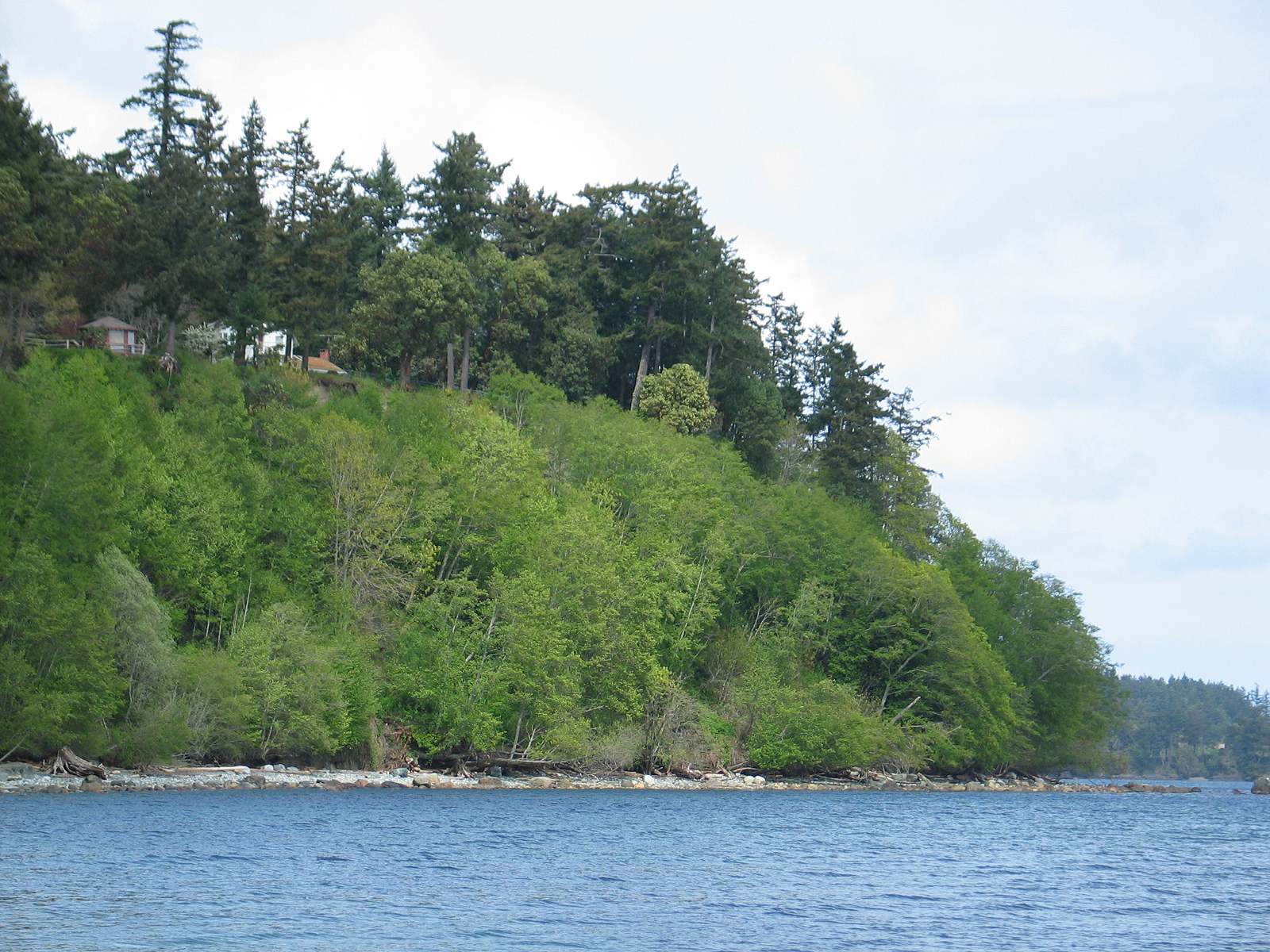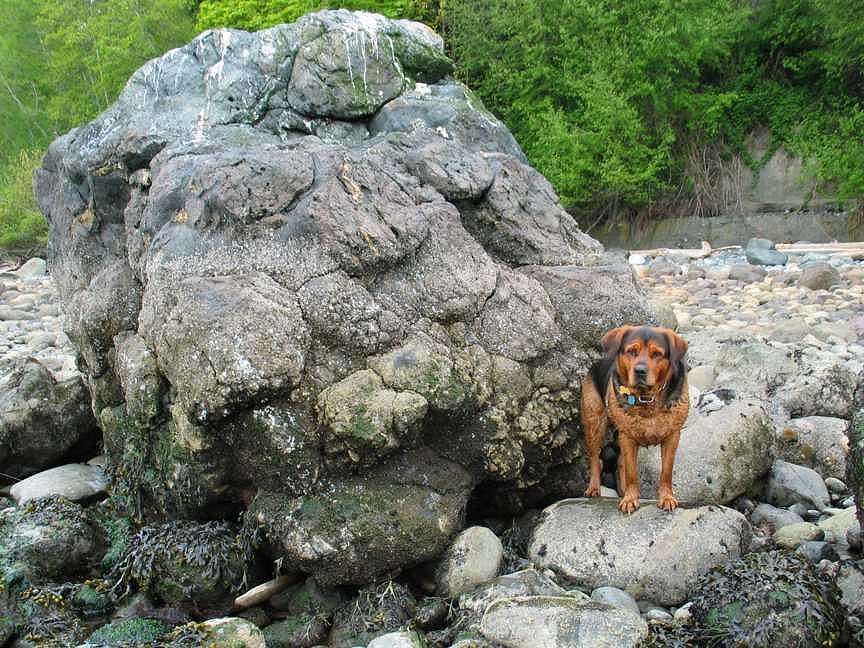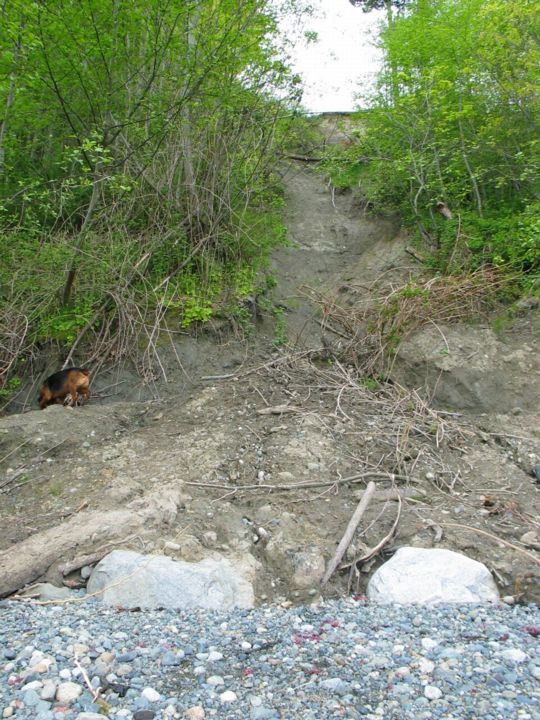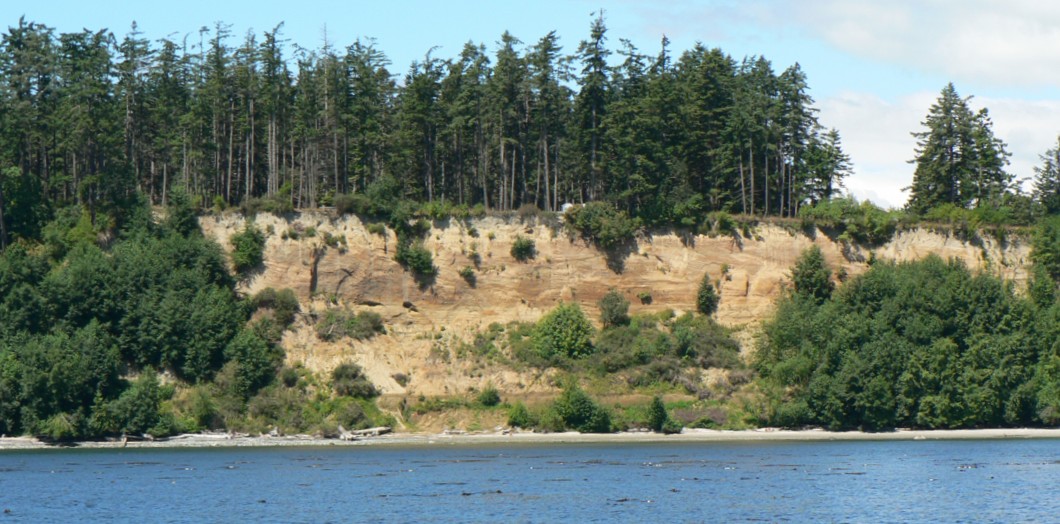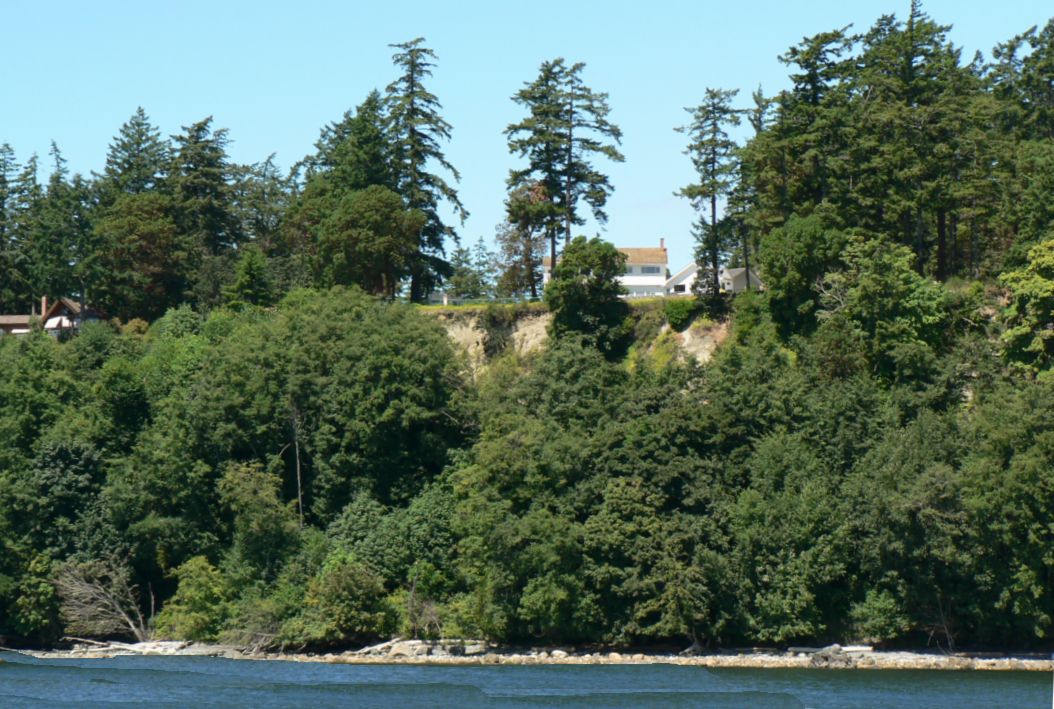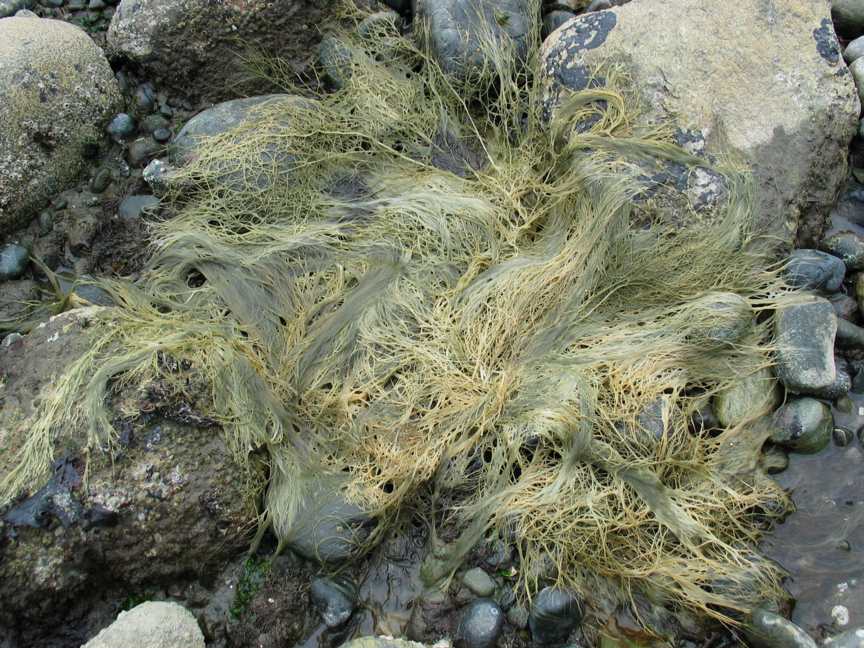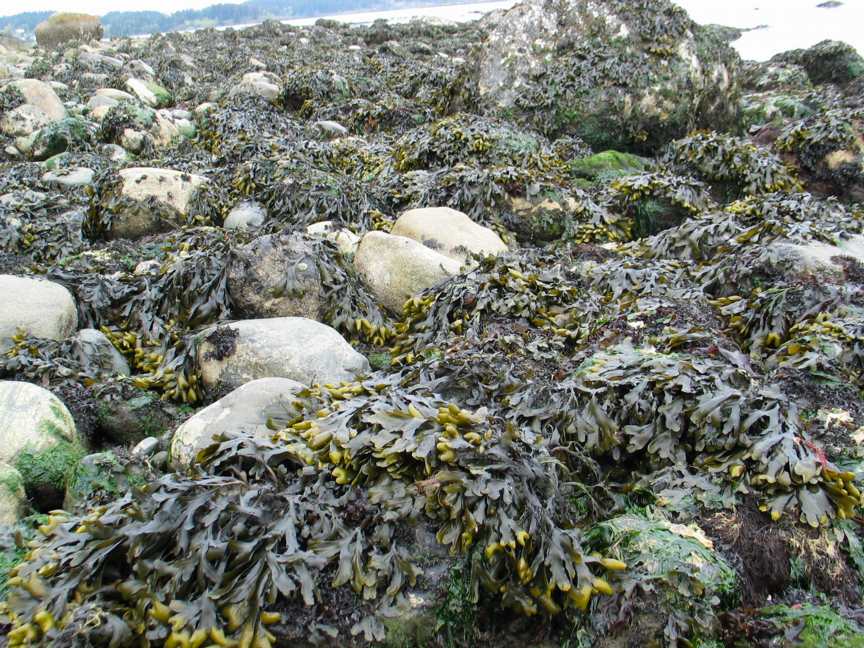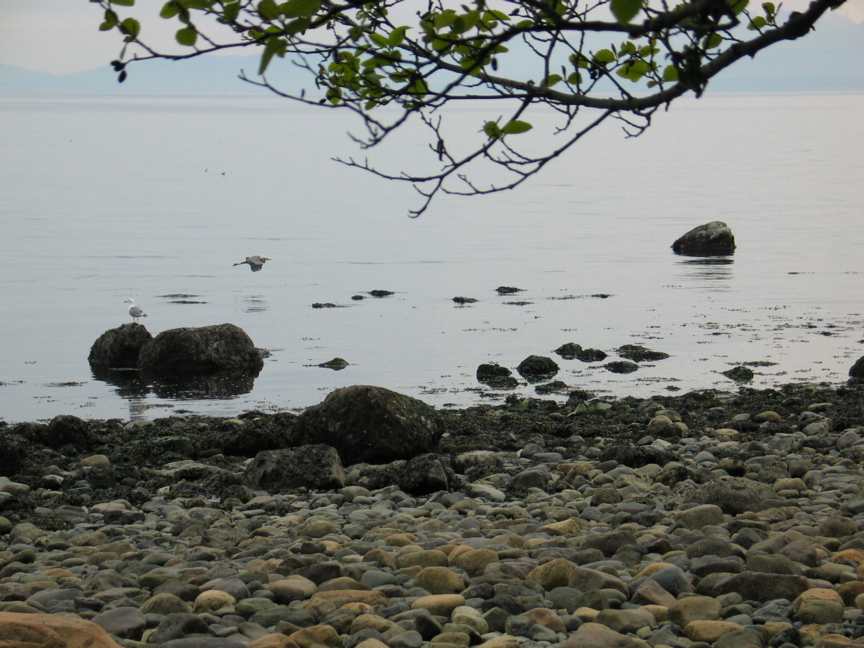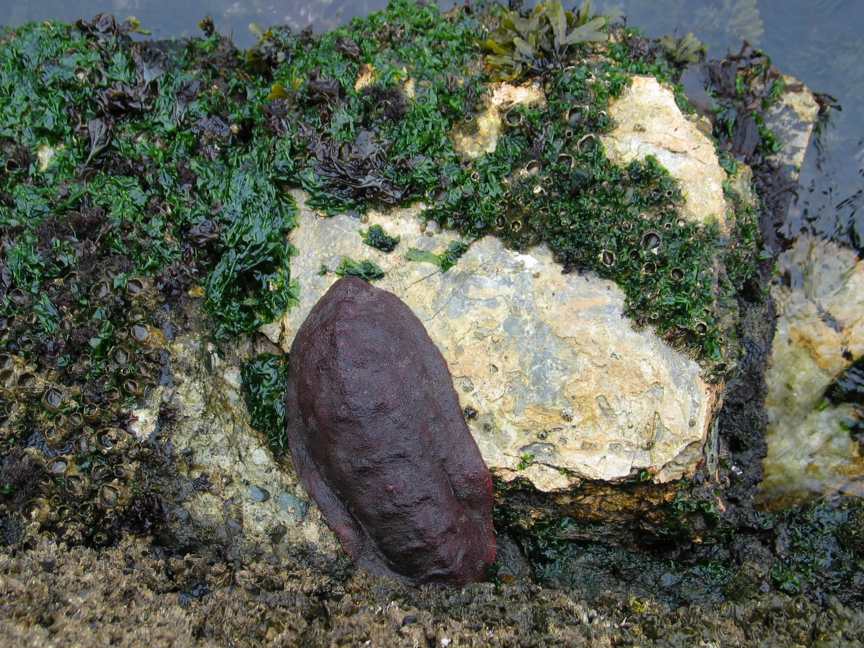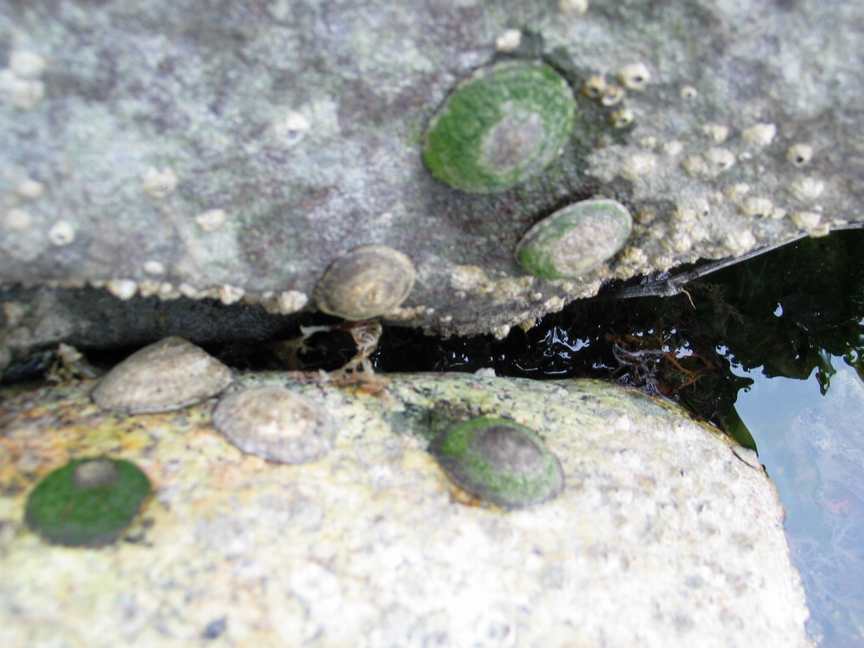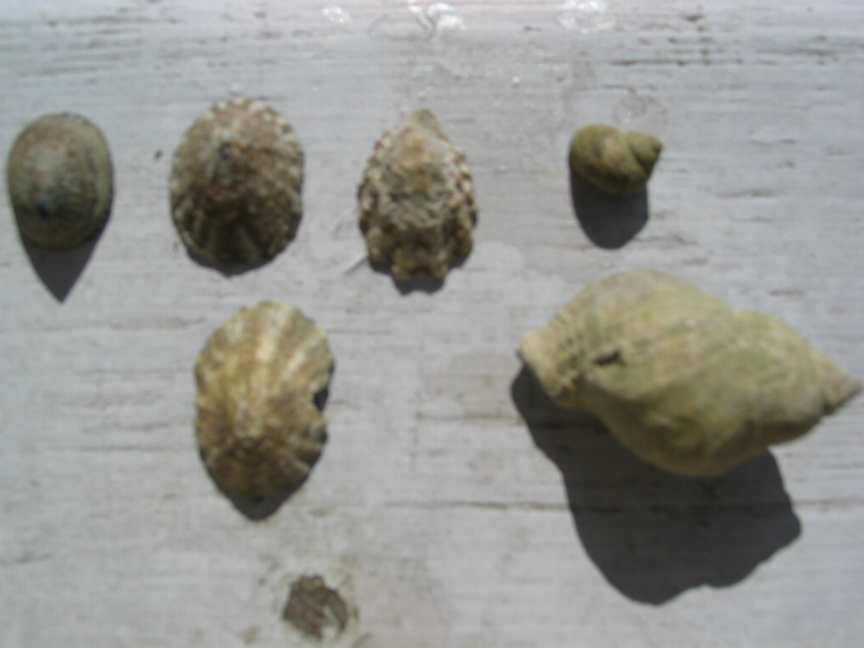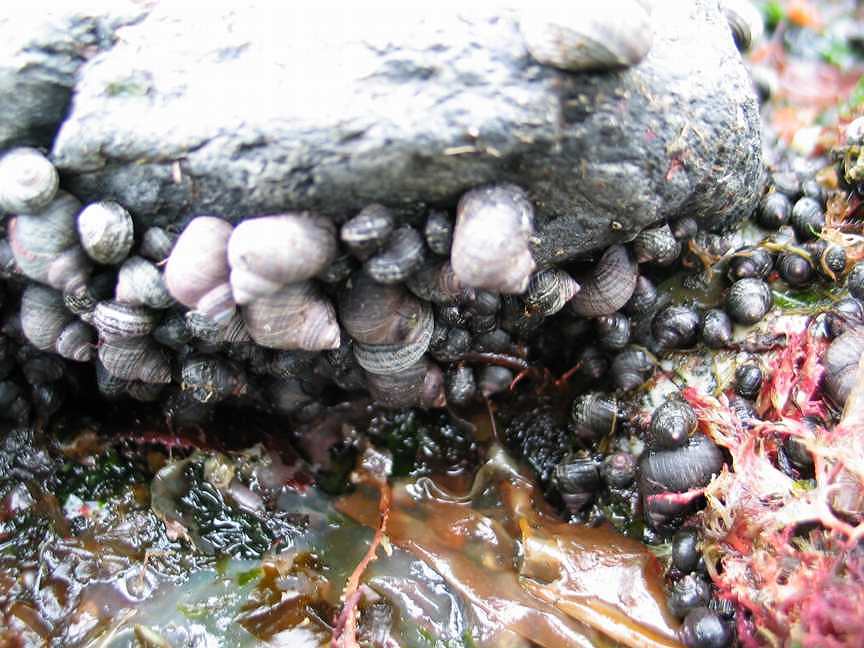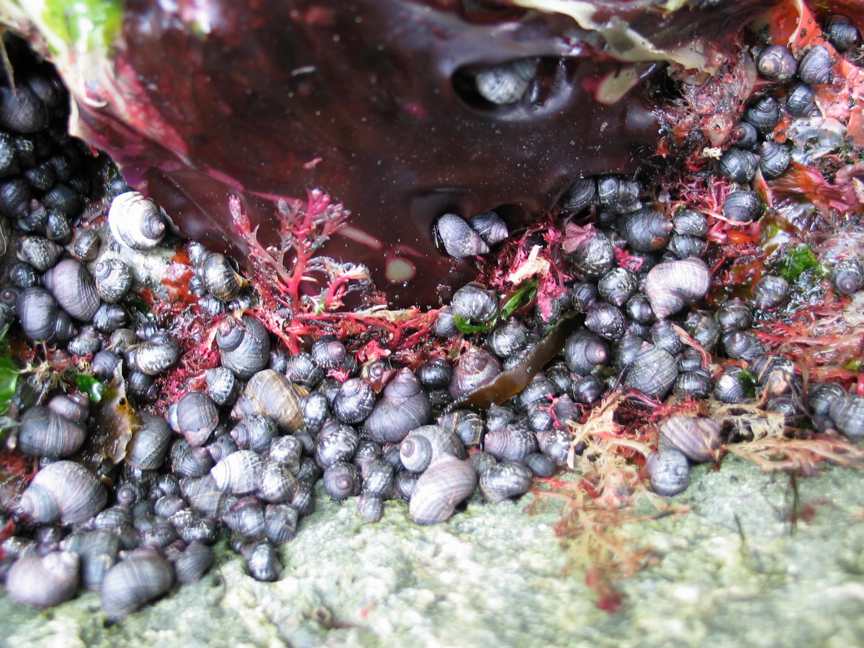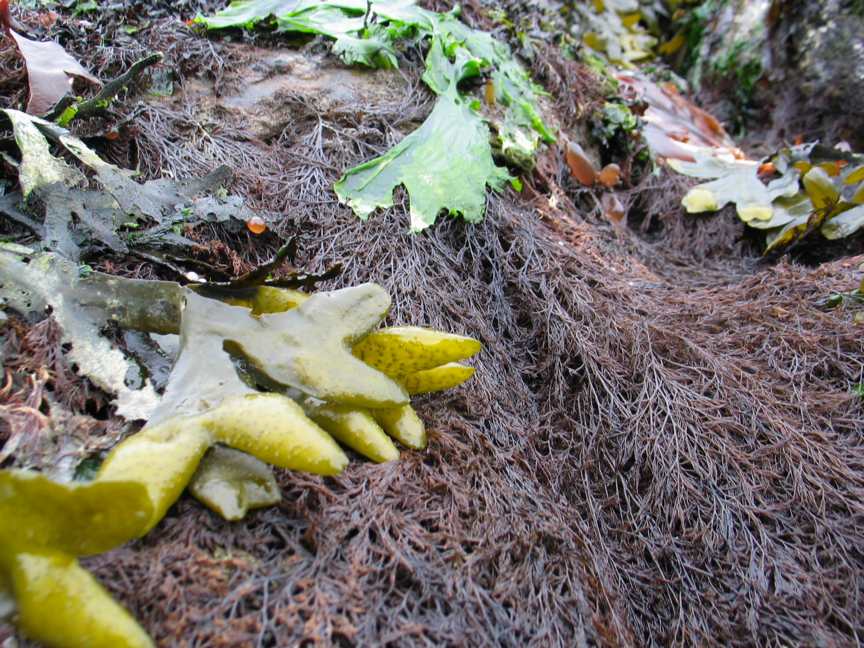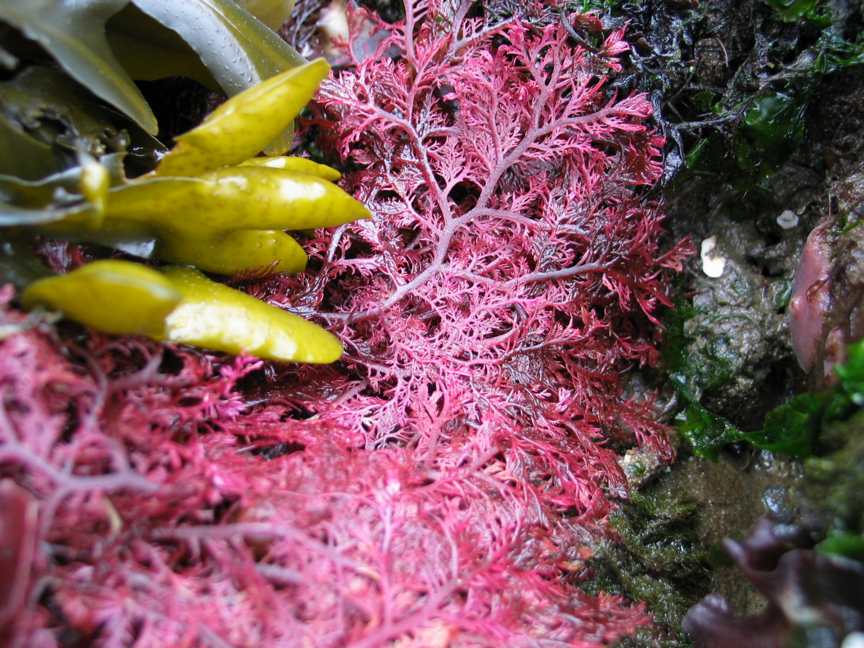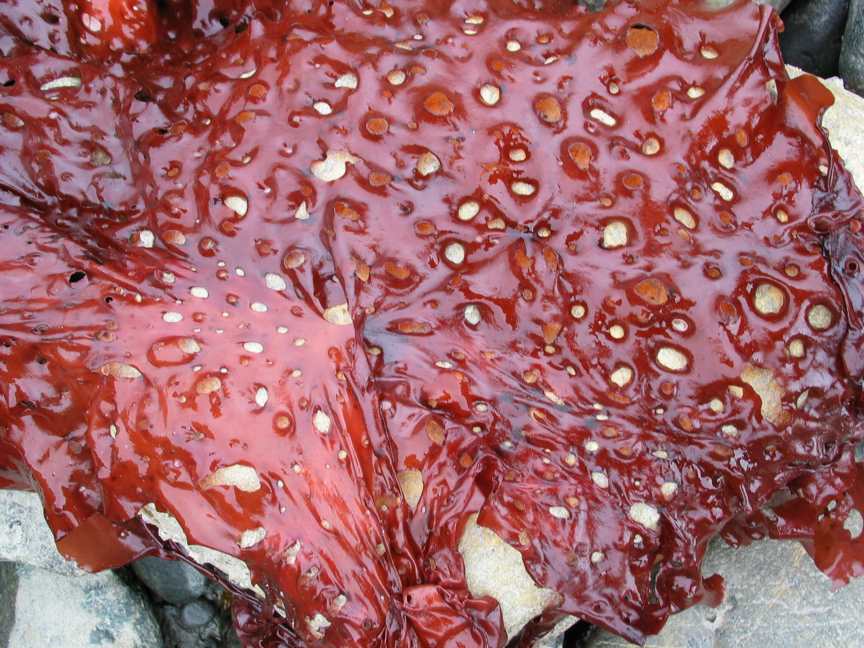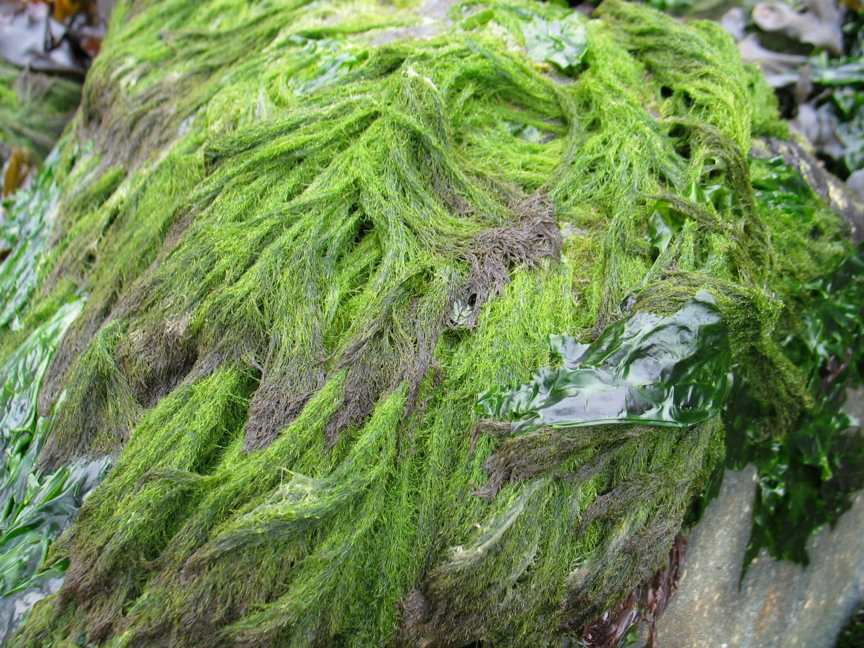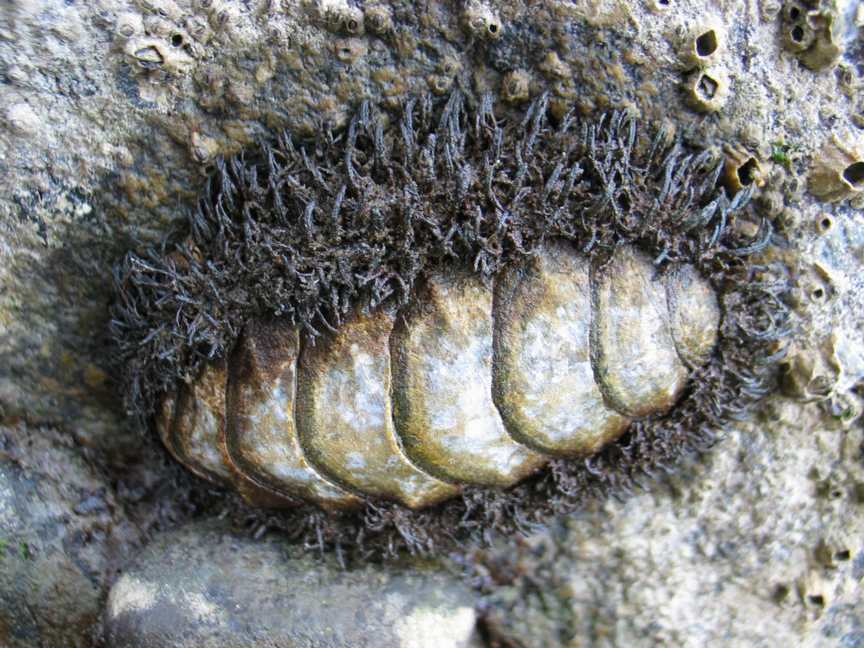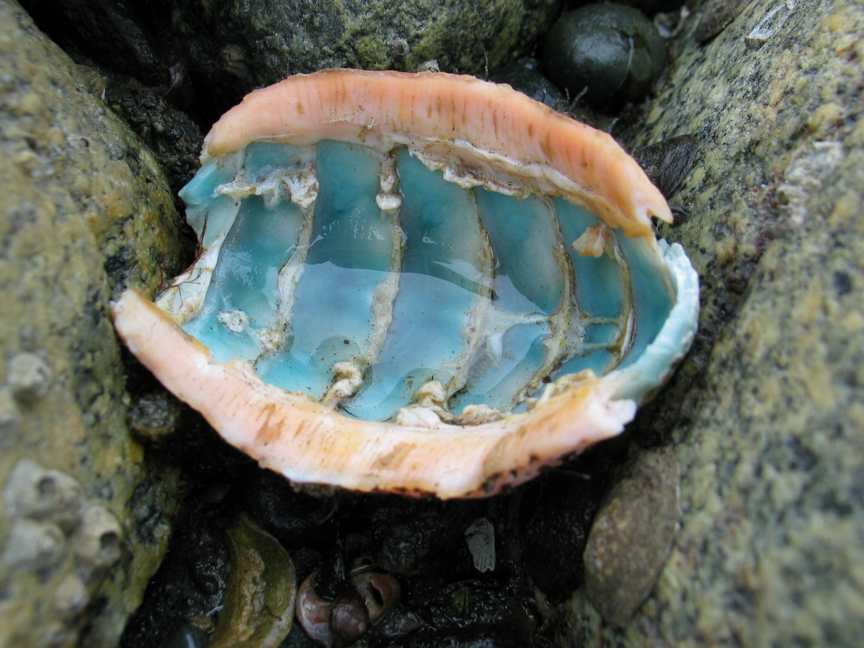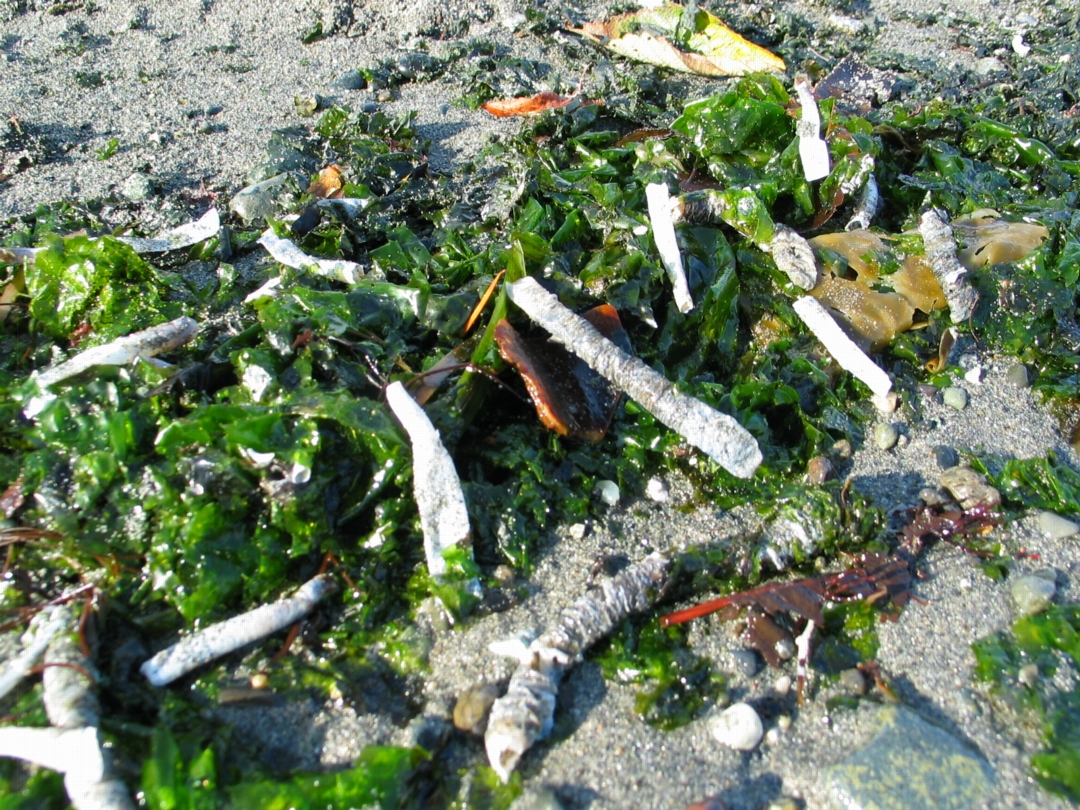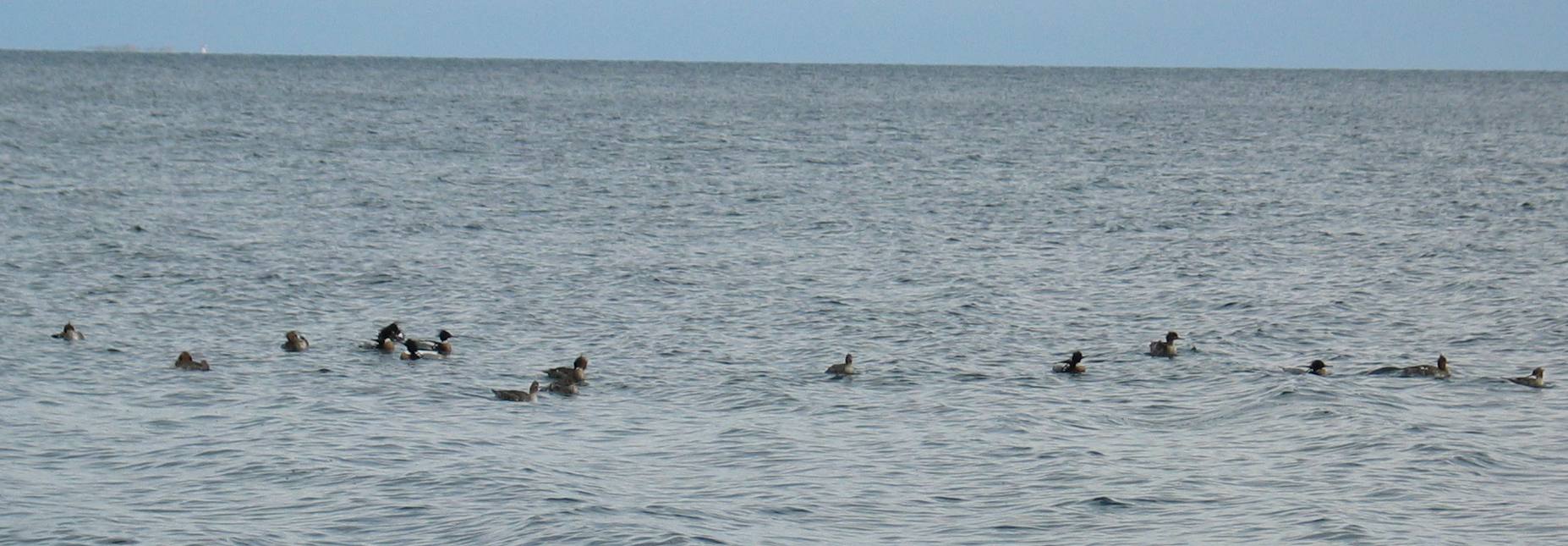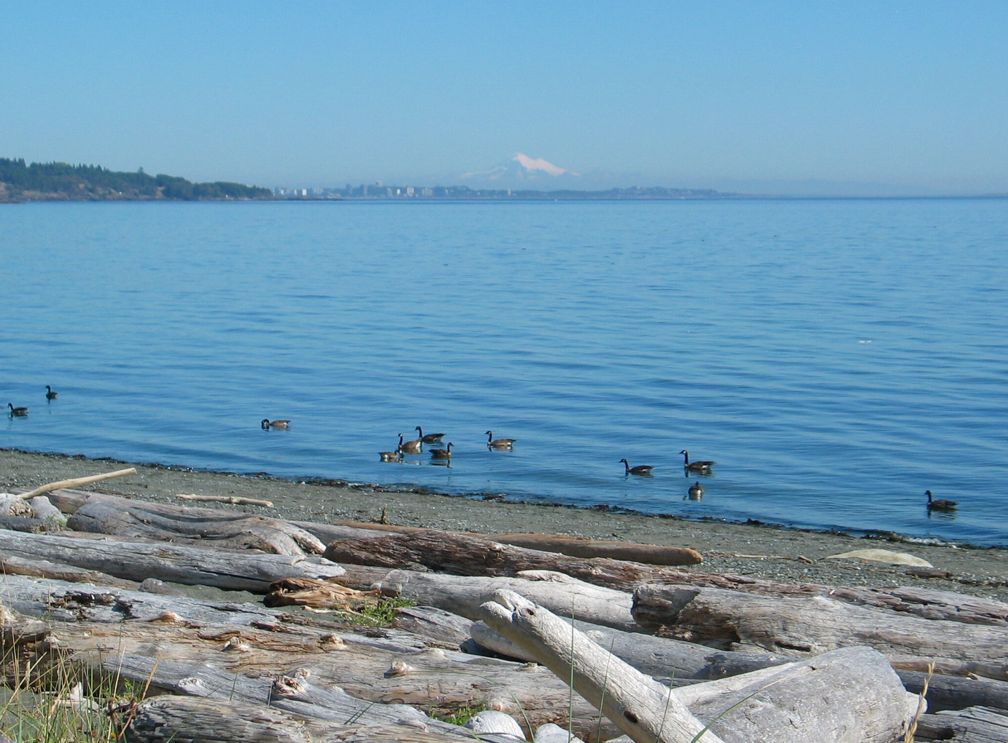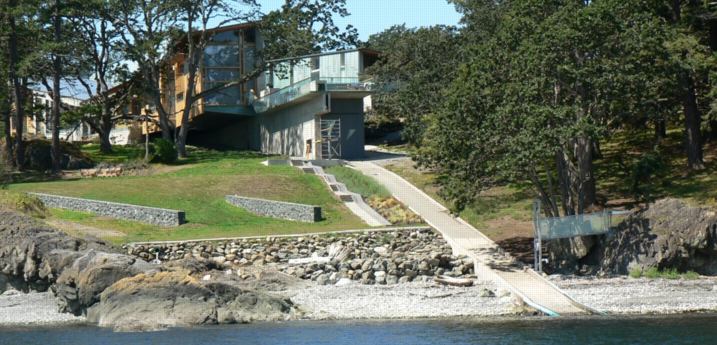Aerial Maps Courtesy of the CRD NATURAL AREAS ATLAS
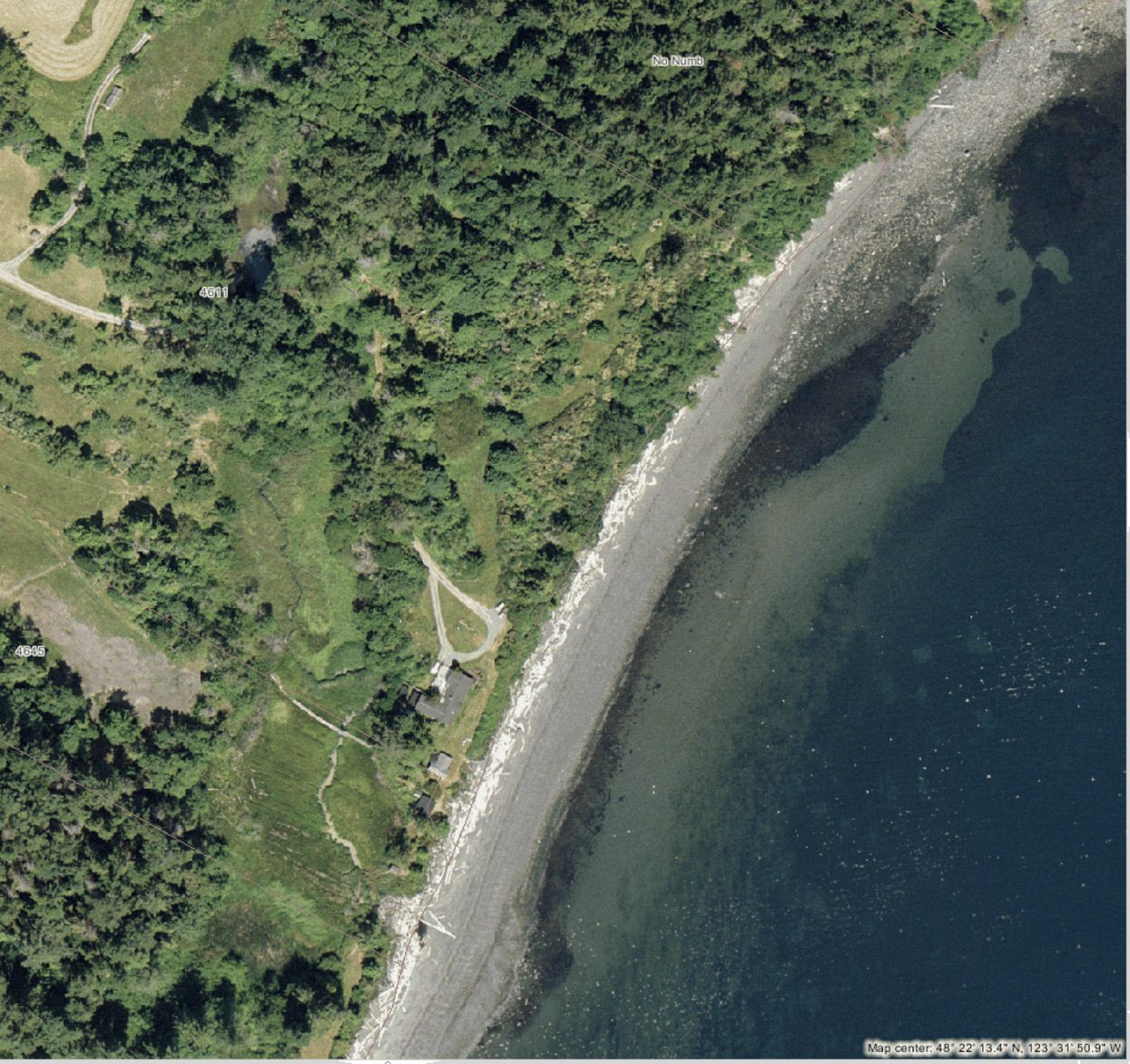 Area1: Cliffs with Boulders
Area1: Cliffs with Boulders
- The south end of the bluff on North Taylor Beach. 2006
- Below the cliffs at the south end, this glacial erratic made of Pillow lava reflects some of the interesting geological history of the area.
- Development on property on the top of the bluff has allowed destabilization of the bluff and this massive slide. 2007.
- The cliffs along North Taylor BeachAt high tide, the waves erode directly at the toe of this cliff.
- The cliffs along North Taylor Beach With Climate change leading to higher ocean levels, the rate of erosion will no doubt increase
- Hair like Desmarestia has drifted onto the rocks. It contains high quantities of Sulfuric acid which leads to rapid breakdown of its tissues.
- The rocks provide a stable substrate for attached algal species such as this Fucus
- A Great Blue heron flies along the shore where it is often seen perched on rocks.
- The giant gumboot chiton grazes Ulva or sea lettuce in the low intertidal zone.
- Limpets can even gather a covering of green algae by the end of summer.
- A collection of various molluscs which form part of the energy web among the rocks
- During low tide, the snails often cluster in the shade of a protective rock although they can seal water in to prevent dessication
- Along with the decaying algae come masses of grazing littorine snails.
- Red filamentous algae forms a mat over some of the intertidal rocks. Fucus and Ulva also grow here.
- At low tide in the fall, a wide range of drift algal and invertebrate species can be found on the rocks along the beach
- The holes in this red blade algae are not random, but grow that way so that the blade is exposed to less drag and better aeration
- The green algae, Spongomorpha covers a few of the rocks at the end of summer.
- The top surface of the mossy chiton Mopalia
- –and the inside with the shell chevrons remaining after the animal has been eaten by a shorebird.
- November 15, 2008: tube worms show up in the strand line after the winter winds from the north and east agitate the offshore sand bar. These tube worms have provided a valuable resource of food for fish and invertebrates.
- Winter brings a variety of birds foraging in this section of Parry Bay along Taylor Beach. Here a flock of common mergansers dive for food on the shallow sandy bottom.
- Canada geese which are an unwelcome pest for farmers in the area, find the shores of Parry Bay a good habitat for moulting season in the summer. Mount Baker in Washington State shows up over Victoria in the northeast.
- Link to the Anthropogenic Impacts on Habitat modification

